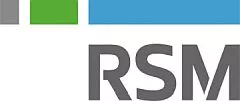- with readers working within the Retail & Leisure industries
- with readers working within the Retail & Leisure industries
Executive summary
The CRA has introduced important updates to the scientific research and experimental development (SR&ED) program that could reshape how businesses manage compliance. New guidance on gross negligence penalties increases the consequences of inaccurate or unsupported claims. To stay ahead, businesses should evaluate their current practices, address potential risks and ensure their SR&ED processes align with evolving CRA requirements.
About 80 per cent of research and development (R&D) support from the Canadian government is provided through tax incentives, according to a 2021 Department of Finance report. At a federal level, these tax incentives are administered through the scientific research and experimental development (SR&ED) program, making this program a vital source of funding for R&D in Canada.
The Canada Revenue Agency's (CRA) recent policy updates to the SR&ED tax incentive program, including clarification on gross negligence penalties, highlight the importance of understanding compliance requirements when claiming these incentives.
Gross negligence policy clarifications
Gross negligence penalties (GNP) are applied where knowingly or under circumstances amounting to gross negligence, a taxpayer makes a false statement or omission on a tax return or other tax filing. In relation to SR&ED claims, this includes circumstances such as (but not limited to):
- submitting a claim where there is evidence the taxpayer knew the project did not involve SR&ED eligible activities
- submitting a claim where the described SR&ED activities did not actually take place, or did not take place in the year
- submitting a claim for amounts where the taxpayer has been advised in writing that those amounts do not qualify
- submitting a claim for unsubstantiated amounts after being advised in writing what is required to support these types of amounts
The CRA has updated its policy regarding the application of GNP on overstated SR&ED claims. This policy revision reflects a legislative change from the former July 19, 1996 policy and aims to provide clearer guidelines on when and how penalties will be applied. The two notable clarifications provided by the CRA updates are as follows:
- GNP can now be applied to amended tax returns, whether they include a new SR&ED claim or adjust an existing one.
- The CRA has illustrated how GNP may apply to SR&ED claims by providing three detailed examples of how penalty amounts could be calculated in various scenarios.
The penalty is equal to the greater of $100 and 50 per cent of the total of:
- the understated Part I tax payable reasonably attributable to the false statement or omission; and
- the refund of the overstated SR&ED refundable investment tax credit (ITC) claimed.
The CRA will consider the claimant to have deducted the overstated ITC first before any other ITCs are deducted from its income in the year. Further, when the GNP applies to the refund of the refundable ITC, the CRA calculates the penalty on the entire overstated refund.
Preventing GNPs on SR&ED claims
To avoid the GNPs, businesses should focus their efforts on the following areas when making SR&ED claims:
- Thorough documentation: Maintain detailed records of all SR&ED activities to substantiate claims and demonstrate compliance.
- Professional advice: Consult with tax advisors who specialize in SR&ED claims. SR&ED eligibility can be complex and nuanced. Professional expertise can help ensure a claimant is meeting the criteria for the program. Note, with regards to income tax returns and GNPs, the courts have generally found that taxpayers have an obligation to review their returns and cannot completely delegate responsibility for accuracy in returns to their advisors.
- SR&ED policy changes: Companies that utilize the SR&ED program, or who may become eligible under the proposed changes, should remain cognizant of any future changes that may occur to the program. This will allow SR&ED program participants to best align their claims with any future CRA guidance or changes.
Other SR&ED program changes
The CRA is continuously improving the SR&ED program for Canadian businesses. This includes two recent updates:
- In a recent communication, the CRA has announced the removal of SR&ED service visits, which was a tool for the CRA to touch base, risk-free, with claimants they have not met with in 3 to 5 years to confirm their understanding of SR&ED eligibility. Instead, the CRA is shifting its focus on direct interactions with specialists through pre-claim, targeted sector-specific presentations and general information webinars.
- Through the 2024 fall economic statement, the federal government proposed updates to the SR&ED program, including increasing the annual expenditure limit for the enhanced 35 per cent tax credit, raising taxable capital phase-out thresholds and extending eligibility to Canadian public corporations, among other changes. Despite the recent federal election creating some uncertainty regarding the previously proposed SR&ED measures, businesses should remain aware of future SR&ED changes as the new Liberal party has formally announced their desire to make further updates to the existing SR&ED program.
Looking ahead
The SR&ED tax incentive program offers significant benefits to businesses engaged in research and development, providing valuable financial support to foster innovation. However, the risk of GNP increases the importance of careful compliance and accurate documentation. To navigate these complexities, businesses should adopt best practices such as maintaining thorough records of all relevant R&D activities, seeking professional advice, and staying up to date on the latest CRA guidelines. To help with these best practices and maximize the benefits of the SR&ED program, businesses can engage RSM tax professionals who specialize in SR&ED claims. They provide critical insights and consultation on claim documentation, application reviews, and audit support.
The content of this article is intended to provide a general guide to the subject matter. Specialist advice should be sought about your specific circumstances.





